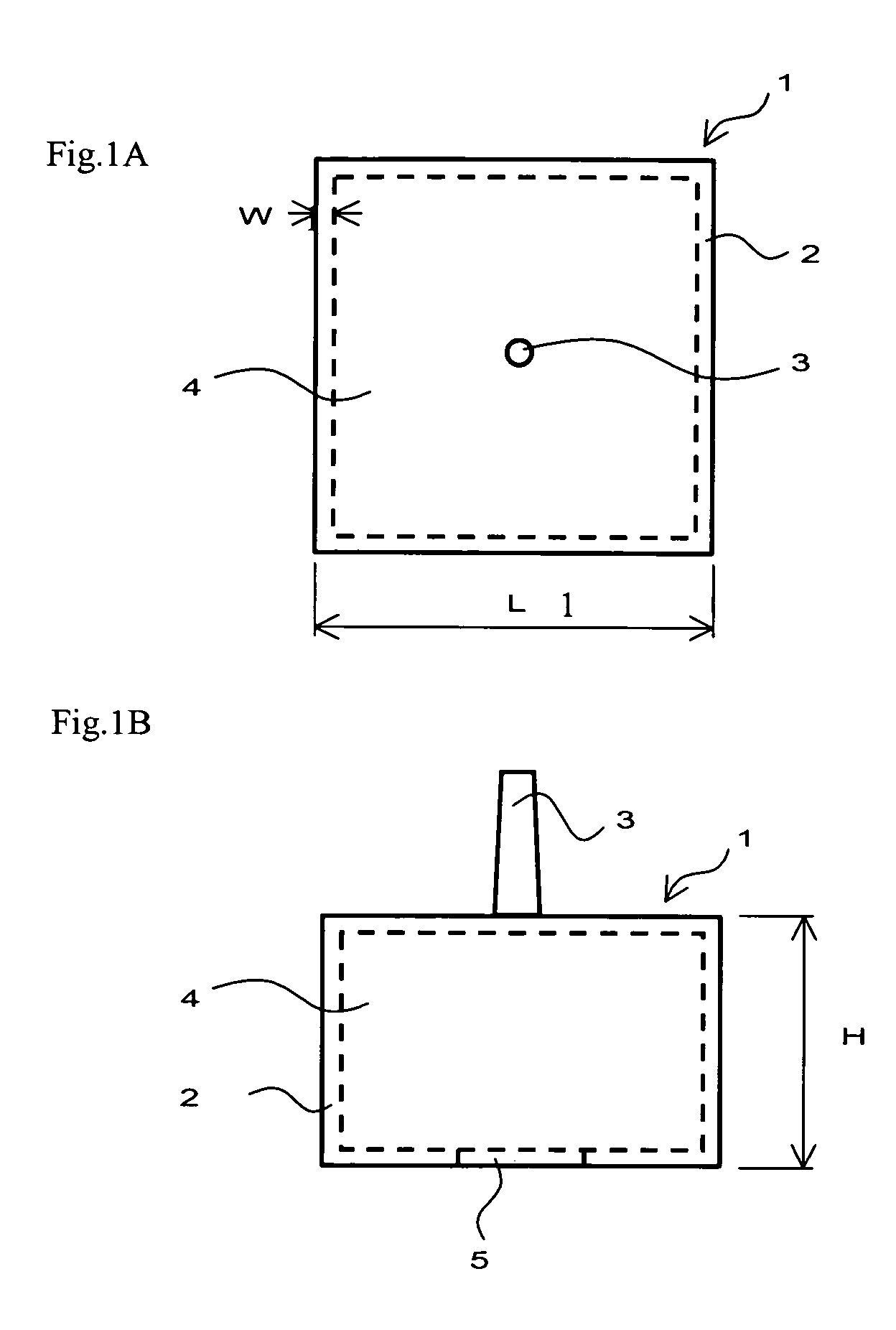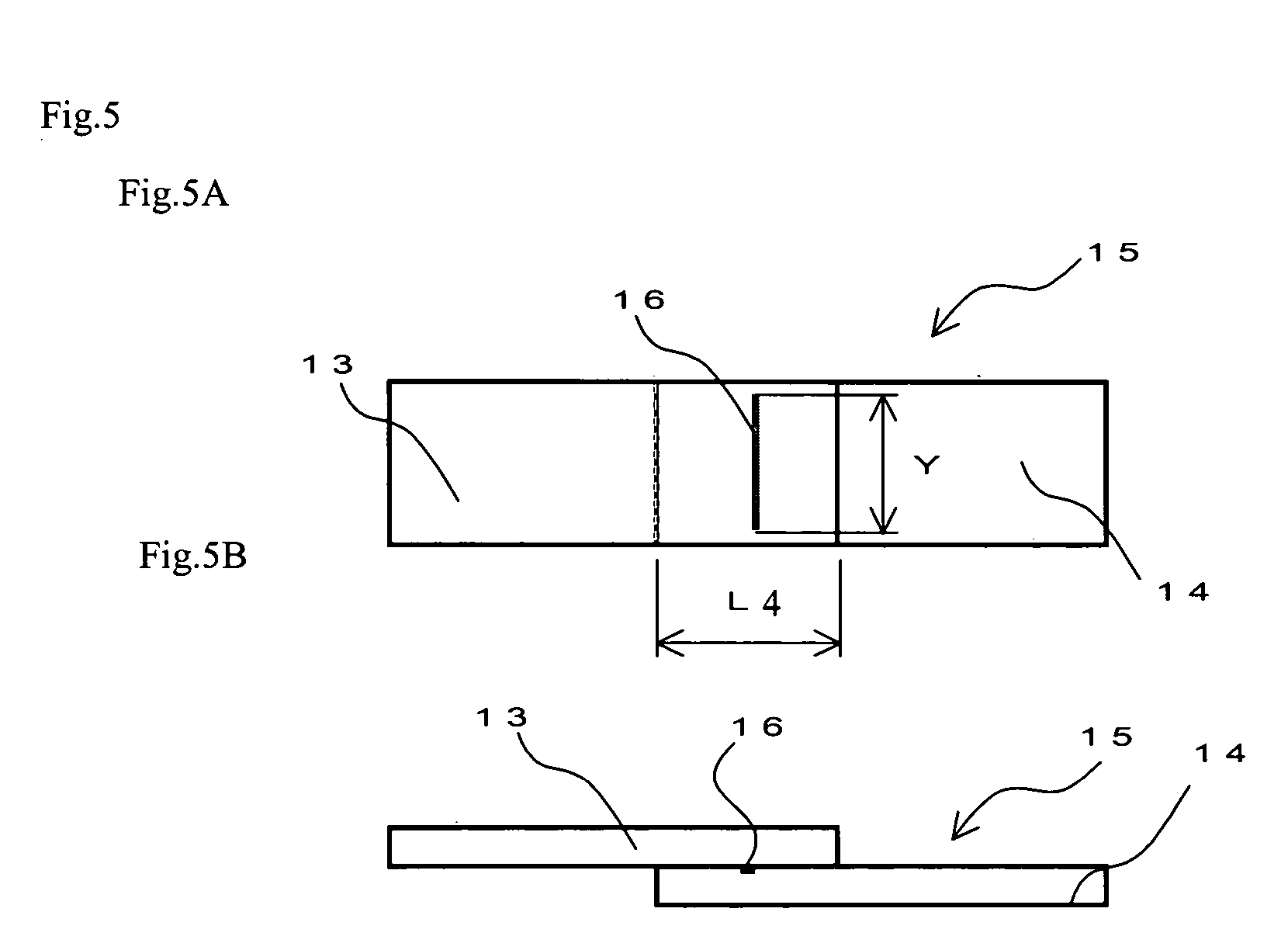Colored resin composition for laser welding and composite molding product using the same
a technology of laser welding and composite molding, which is applied in the direction of organic dyes, special tyres, transportation and packaging, etc., can solve the problems of reducing the transmittivity of laser beams, affecting the flexibility of product design, and affecting the moldability of polybutylene terephthalate based resins, etc., to achieve less stain to the mold, not impairing the flexibility of product design, and dark color tone
- Summary
- Abstract
- Description
- Claims
- Application Information
AI Technical Summary
Benefits of technology
Problems solved by technology
Method used
Image
Examples
example
[0088] Examples are demonstrated below to explain the present invention more specifically, however, the present invention is not limited to the description of these Examples. Further, the ratio of addition and compounding presented in the Examples and Comparative Examples are all based on parts by weight.
[0089] Hereinafter, methods of the evaluation of material characteristics of the Examples and Comparative Examples are demonstrated.
(1) Evaluation of Moldability
[0090] A tensile test piece (type ASTM1, thickness of 3.2 mm) was produced using an injection molding machine (Nissei 60E9ASE) under a molding condition with a cylinder temperature of 260° C. and a mold temperature of 80° C. Those accompanied by deformation of the test piece upon extruding the molding article when molded, or those with great buckling at the extruded portion were determined as unfavorable in molding, which were shown as “x” in the Table. On the other hand, those without deformation were shown as “◯” in th...
examples 1 through 10
, Comparative Examples 1 Through 12
[0107] Polybutylene terephthalate having an intrinsic viscosity of 0.81 dl / g (a-1) (“TORAYCON 100S,” manufactured by Toray Industries, Inc.) and the polybutylene terephthalate / isophthalate copolymer (PBT / I) (a-2) produced in Reference Example 1 were used to produce the ingredient (A) (polybutylene terephthalate based resin) with (a-1) alone or through blending (a-1) and (a-2). In addition, any one of the following (B-1) to (B-3) as the ingredient (B), either a mixture including the ingredients described in (C-1) to (C-9) (proportion represented by weight ratio) or a single ingredient therefrom as the ingredient (C) (organic pigment), and the following (D-1) when the ingredient (D) (glass fiber) is to be added and compounded were employed. Using a biaxial extruder with a predetermined cylinder temperature of 250° C. having a screw diameter of 57 mm, melting and kneading was carried out through feeding the ingredient (A) (polybutylene terephthalate b...
examples 11 through 22
, Comparative Examples 13 Through 21
[0121] Using a biaxial extruder with a predetermined cylinder temperature of 250° C. having a screw diameter of 57 mm, melting and kneading was carried out through feeding the ingredient (A) (polybutylene terephthalate based resin), the above-mentioned polycarbonate resin (B-1), either a mixture including ingredients described in (C-1) to (C-9) (proportion represented by weight ratio) or a single ingredient therefrom, as well as the following material as the ingredient (E) and another additive from a breech-loading part, and feeding the ingredient (D) (glass fiber) from a side feeder when it is to be added and compounded. After cooling the strand which was discharged from the die in a cooling bath, a resin composition for laser welding was obtained by pelletizing with a strand cutter. After drying the thus resulting each material with a hot air drier at 130° C. for 3 hours, molding and then evaluation were performed. The results of evaluation are ...
PUM
| Property | Measurement | Unit |
|---|---|---|
| thickness | aaaaa | aaaaa |
| thickness | aaaaa | aaaaa |
| thickness | aaaaa | aaaaa |
Abstract
Description
Claims
Application Information
 Login to View More
Login to View More - R&D
- Intellectual Property
- Life Sciences
- Materials
- Tech Scout
- Unparalleled Data Quality
- Higher Quality Content
- 60% Fewer Hallucinations
Browse by: Latest US Patents, China's latest patents, Technical Efficacy Thesaurus, Application Domain, Technology Topic, Popular Technical Reports.
© 2025 PatSnap. All rights reserved.Legal|Privacy policy|Modern Slavery Act Transparency Statement|Sitemap|About US| Contact US: help@patsnap.com



